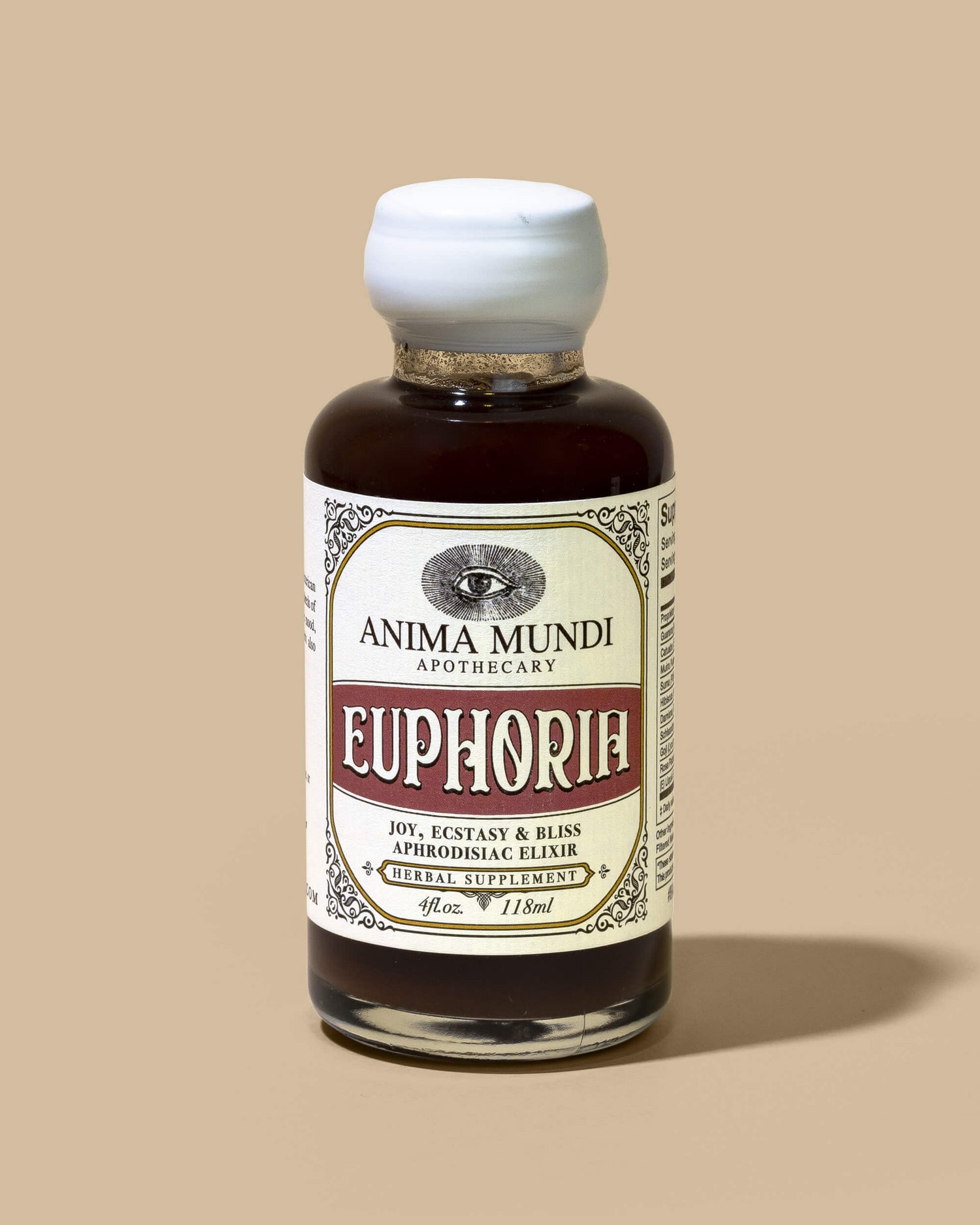Excerpted from "Adaptogens Herbs for Longevity" By @Adriana Ayales
Photos by Eva Gaillot
What are Adaptogens?
Adaptogens are remarkable botanical treasures that help the body restore balance and adapt to stress. They work by increasing the body’s resistance to multiple stressors, including physical, emotional, chemical, and environmental. They also shield against acute and chronic stress. Their normalizing effects on the body, particularly regarding the endocrine and immune systems, are what make them particularly unique, though each and every adaptogen operates differently for each individual person. By working non-specifically, they alter base operations within the organism, regaining homeostasis through their regenerative properties and helping to harmonize the body, mind, and spirit.
Three Qualifications for Herbs to Be Adaptogenic:
- Adaptogens are non-toxic. Adaptogenic herbs should be safe and nontoxic, showing no significant side effects or contraindications.
- Adaptogens produce a non-specific response in the body. Adaptogens have a generalizing action to improve resistance to all kinds of stress—physical, psychological, environmental, etc.
- Adaptogens have a normalizing impact on the body. The balancing capacity within adaptogens has a bidirectional effect. This means that the plants’ medicinal constituents will perform as needed in order to help return the stressed physiological conditions back to a normalized state.
Adaptogens Have Existed for Millennia
Although the term ‘adaptogens’ has only existed since the late 1940s, these wonderful plants have been revered for centuries. Nearly every culture in the world has used rejuvenating and restorative plants. In Daoism, for example, many of the herbs that achieve the same results as adaptogens are referred to as “tonic herbs.” In Chinese herbal medicine, they’re called “qi tonics.” In Ayurveda, they’re known as “rasayanas.” And in Western herbal medicine, some of the herbs that fall under “nutritive tonics” and“trophorestoratives” essentially parallel adaptogenic herbs. In rainforest herbalism, herbs similar to adaptogens tend to be called “para-toda,” meaning “heal-all.”
Modern clinical research has slowly proven that much of the lore around these herbs is indeed true. As far as scientific and clinical studies are concerned, adaptogenic herbs have received the most attention. The wide range of healing benefits that they offer covers almost every area of the body. The history and current scientific studies of these herbs will help illuminate why they’ve been revered for thousands of years.
Adaptogenic Anatomy
Organs involved in the stress response
Adaptogens use their balancing powers to catalyze changes in the body, particularly in the neuroendocrine and immune systems. The endocrine and nervous system are so closely related that they are often lumped into a single system: the neuroendocrine system. This system deals with chemical communication in the body via hormones, which work in conjunction with the nervous system.
The goal of the nervous system is to bring homeostasis to all internal responses, which helps keep the body healthy and protected. Within the endocrine system, we find the famed HPA axis, a complex set of interactions between the hypothalamus, pituitary, and adrenal glands.
The hypothalamus (H) is the command center of the brain, often called our “god center." This area of the brain communicates with the rest of the body through the autonomic nervous system and through influxes of hormones. H oversees and assesses everything going on in the body, then informs its “personal assistant,” the pituitary (P) gland, what to do. The personal assistant informs the “general managers” (the target organs), which then enlist the “workers”(particular biochemical processes) in the relevant tissues or organs of the body. The enlisted or activated tissues include the visceral organs—heart, lungs, intestines, kidneys, liver, and pancreas, as well as many lesser-known parts of the body such as the gallbladder, spleen, blood vessels, and skeletal muscles.

Stress hormones
This section describes the different hormones secreted within the endocrine system and how they are triggered by the stress response.
Cortisol, one of the more famous stress hormones and the primary hormone released from the adrenal glands, is often called the “stress hormone.” When cortisol is secreted, it causes a breakdown of muscle protein, leading to the release of amino acids into the bloodstream. Amino acids are processed by the liver to synthesize glucose. This process raises blood sugar levels in the brain, which gives us energy. At the same time, the other tissues in the body decrease their use of glucose. Cortisol also leads to the release of fatty acids for use by the muscles. The processes directing and replenishing energy prepare the body to manage stress and ensure that the brain receives adequate energy sources. Another important purpose of cortisol in the body is the regulation of blood pressure and cardiovascular functions. It assists the immune system in responding to infection and inflammation. Cortisol levels are at their highest in the morning. The oversecretion of cortisol suppresses the immune system and can cause a number of symptoms such as: severe anxiety, hypertension, inflammation, depression, chronic fatigue, PMS in women, infertility, sex hormone imbalance, insulin resistance, weight gain, insomnia, and polycystic ovary syndrome.
When the natural stress response goes haywire
The body’s stress-response system is usually self-limiting. Once a perceived threat has passed, hormone levels return to normal. As adrenaline and cortisol levels drop, your heart rate and blood pressure return to baseline levels, and other systems resume their regular activities. But when stressors are always present and you constantly feel under attack, that fight-or-flight reaction stays turned on.
The Results of Unmanaged Stress
Unmanaged stress and disruption of the HPA axis’ flow is at the core of many health issues. For example, when the HPA axis is strong, your body is usually able to handle even high levels of stress. A strong HPA axis is also helpful for pregnant women, women who have just given birth, or women in menopause.
Over time, the repeated activation of stress hormones, aka the “flight or fight” response, can take a serious toll on the body. Research suggests that chronic stress contributes to high blood pressure, promotes the formation of artery-clogging deposits, and causes brain changes that may contribute to anxiety, depression, and addiction. More preliminary research suggests that chronic stress may also contribute to obesity, both directly (causing people to eat more) and indirectly (decreasing sleep and exercise).
Chronic stress and the over-secretion of cortisol and other stress hormones can disrupt almost all of the body’s processes. Overexposure to cortisol can cause numerous health problems, one well-known problem being adrenal fatigue.
“Adrenal fatigue” is a term often used by health professionals to describe the phenomenon of the adrenal glands running on empty and the resulting mental and physical state of those experiencing it. Our glands release high levels of cortisol during stressful periods, which is the most important hormone we have to help the body manage stress.
Think of cortisol as our own built-in alarm system, alerting us when the body is in danger. It also works with certain parts of the brain to control mood, motivation, and fear. If too much cortisol is secreted, many bodily processes begin to underperform, potentially resulting in illness.

Symptoms of adrenal fatigue:
- Feeling tired for no reason
- Trouble getting out of bed, even when you’ve had a decent night’s sleep
- Unable to handle stress; everything becomes a trigger
- Recurring brain fog; lack of creativity and focus
- Low immune function. A difficulty recovering from being sick
- Autoimmune issues
- Decreased sex drive
- Mood swings, depression, severe ups and downs
- A feeling of being constantly overwhelmed and anxious
- Intensely craving sweets, carbs, or salty snacks
- Overuse of stimulants like caffeine, sugar, or tobacco
- Inexplicable weight gain
Forms of Stress
Stressors can come from many different angles. Stress is not experienced in any uniform way and can manifest at any time. It often comes and goes, and many different types of stressors can easily affect us without our noticing. Modern-day culture is experiencing unusually high volumes of stress from the environment —perhaps the highest volumes in recorded history. Toxins in our water, air, food, and atmosphere are contributing significantly to higher levels of stress in our bodies and minds. It’s important to remember that a healthy lifestyle, coupled with adaptogenic herbs and a positive mindset, can help us lead fulfilling, balanced lives.
- Biological Stressors — Exposure to bacteria, mold, viruses and parasites.
- Chemical Stressors — Chemicals, toxins, pesticides, herbicides, fungicides, insecticides, heavy metals, household and industrial chemicals, fumes, dust, smoke, tobacco, and synthetic drugs.
- Consumable Stressors — Toxic substances like drugs, alcohol, and tobacco, refined and highly processed foods, mineral-depleted foods (grown in poor soil), genetically modified foods, foods grown in toxic environments with pesticides, herbicides, etc., coping with nutritional deficiencies, and free radicals from eating toxic foods.
- Environmental Stressors — Includes pollutants and toxins available within the atmosphere, water and soil, such as chloride, fluoride, lead, mercury, pesticides, etc. Exposure to extreme cold or heat, noise, ultraviolet sunlight, altitude, allergens, xenoestrogens (foreign substances that imitate the effects of estrogen), electromagnetic influences (wifi, radio waves, electric high-voltage lines), and radiation.
- Psychological Stressors — These include emotional and mental stressors such as: depression, moodiness, anger, fear, anxiety, loss of desire, worry, grief, shock, trauma, mental illness, major life changes, and overwhelming responsibilities Psychological stress often goes hand-in-hand with physical stress.
- Physical Stressors — Includes intense physical activity, healing from accidents, recovery from strenuous exercise, and physical pain resulting from any of the above mentioned stressors.
- Spiritual Stressors — This form of stress is often brought on by a lack of meaning or greater purpose in our lives. When our soul is not at ease, and we’re experiencing spiritual stress.
Primary Adaptogens
There are many herbs out there that many of us love that have adaptogenic chemistry, like Reishi, Suma, Maca and many others. But did you know they aren't officially "adaptogens". The list below are those that have be rigorously tested back in the 50's. Yet due to a lack of continued research many potential adaptogens haven't officially made the shortlist. Therefore 'secondary adaptogens' like Reishi, Gynostemma, Maca, He Shou Wu, Shatavari, Amla, and many others are technically not Primary Adaptogens. Yet, their incredible chemistry parallels and very much abide by the adaptogenic qualifications reviewed above.
- Ashwagandha - Withania somnifera
- Cordyceps - Cordyceps sinensis
- Eleuthero - Eleutherococcus senticosus
- Ginseng - Panax ginseng, Panax quinquefolius
- Holy Basil - Ocimum tenuiflorum, Ocimum sanctum
- Licorice - Glycyrrhiza glabra
- Rhodiola - Rhodiola rosea
- Shisandra - Schisandra chinensis
- Shilajit - Asphaltum bitumen

Plant Intelligence Within Adaptogenic Chemistry
It’s no wonder the incredible popularity herbs are now enjoying in today’s world. We’re in a deeply transformative time in history, and herbs with adaptogenic properties are being identified and developed to protect our bodies by helping them adapt to the constant changes and stressors present on the planet.
Each adaptogen attunes the body to a particular energy or set of energetic pathways, generating a non-specific homeostatic response within the body and mind. As we explored in prior chapters, because of their normalizing effects and bi-directionality within the body, we can observe that they have an intelligence of their own in determing what the body needs. Because they work so closely with the hypothalamus and pituitary glands, each adaptogen is ultimately experienced differently by each person, as each person has a different internal recipe for balance. Adaptogens target multiple locations in the body, yet they primarily work with the neuroendocrine system, which includes the hypothalamus, pituitary, and adrenal glands, as well as the sympathoadrenal system (or SAS). They also directly align with and balance our organs, which shape our individual perceptions of the world and control basic survival processes like intuition, pain response, sexual function, blood pressure, circadian rhythm, stress response, and many more.

The Subtle Functions of the HPA Axis
The powerful nutritional benefits and abilities of adaptogens are much more profound than science has so far been able to recognize, and their uses in treating mind, body, and soul date back thousands of years. It’s only recently that we’ve learned about their normalizing effects on oxidative stress, their abilities to enhance metabolic function, and the protection boosts they can offer to the immune system. Historically, they were revered for their deep spiritual attributes.
Most adaptogenic herbs have strong regulatory effects on the endocrine and hormonal system, which are likely related for their spiritual and emotional activating properties. Hormones are known as the ‘molecules of consciousness’—powerful biopeptides that control our awareness of reality, mood, perception, sleep-wake cycles, and bonding. It can be said that hormones are the gateway in which we experience our self and life, as I believe they are one of the major links between the physical, emotional and spiritual worlds.
The hypothalamus, our control center, is about the size of an almond and is located just behind the optic glands. With access to both the nervous and endocrine systems, the hypothalamus plays a key role in activating the pineal gland. It is also closely associated with the limbic system, known as the center of our emotions, feelings, and intuitions. Many ancient cultures have recognized this gland as the “god center”—the seat of our consciousness or spirit. When activated, it secretes neurohormones that communicate with the pituitary gland, signaling the release or inhibition of key pituitary hormones, which in turn activates the pineal gland. Within mystical literature and many ancient or sacred texts, the pineal gland is often referred to as the “third eye,” “the crown chakra,” or “the seat of consciousness.” Ongoing activation and regulation of the pineal gland causes the brain to secrete consciousness-expanding biochemicals. Many ancient spiritual traditions hold that this is the key to opening the third eye.
Melatonin and the Pineal Gland
Melatonin in the pineal gland affects our moods, feelings, immune system functions, circadian rhythms, and the quality of our sleep. Melatonin is known as an anti-aging and anti-stress agent because it suppresses cortisol while also acting as a powerful antioxidant. Studies are now being conducting to learn more about melatonin’s potential to protect our bodies from oxidative damage caused by different stressors. The production of melatonin by the pineal gland is activated by darkness and inhibited by light. Once released, melatonin circulates through the brain via the cerebrospinal fluid (CSF) and enters nearby blood vessels for distribution to the rest of the body. When melatonin levels are disrupted, people tend to experience bad moods, exhaustion, depression, mood swings, or seasonal affective disorder.
HPA Axis and Ancient Cultures
Ancient cultures extensively studied the mysterious functions of the glands forming the hypothalamic-pituitary-adrenal axis (HPA axis) and how they collaborate to trigger meditative states and the perceived access to deeper realities. In Taoism, for example, the center of the brain has been referred to as the “Crystal Palace,” the “Upper Tan Tien,” the “original cavity of the spirit,” and the “ancestral cavity.” This part of the brain is said to be the place where the original “spirit principle” dwells. Sufism also locates the principle of spirit (Ruh) in the head-centre. In Radha Soami teachings, which integrate Sufi, Tantric, and Vedantic ideas, the Ajna or “brow centre” is considered the seat of the soul (Jiva) or spirit (Ruh). The Brahma Kumari movement likewise teaches that this centre is the seat of the soul. They advise practitioners to meditate exclusively on it in order to attain Liberation.
I believe these herbs work directly with our consciousness and our perceptions of life. They essentially work with the organs that form our perception, providing essential nutritions that ultimately tune the mind and body to a higher frequency. You might ask yourself, what is this “higher frequency?” Or, what is the point of achieving this so-called “higher consciousness?” This higher frequency is what mystics and ancient civilizations have come to see as the highest goal of everyday life. It’s been interpreted as a form of enlightenment, a freedom from suffering, and a freedom from the possibility of illness. Many believe that these herbs are once again becoming popular within modern times to catalyze a shift and to act as tools to nourish and protect us during these times of constant change.
Thank you for reading,
xo
Adriana

Adaptogenic + Immune Boosting Morning Latte
Recipe + Photos by Eva Gaillot
@thefrenchcoconut
- 1 Tbsp of heirloom cacao powder
- 1 Tbsp of coconut creamer powder
- 1 tsp of spice blend of choice: cinnamon, vanilla, cardamom, ginger
- 1 tsp of immune-boosting mushrooms of choice, Reishi, Cordyceps...
- 1/2 tsp of collagen booster (Optional: dirty rose chai or original)
- 1 cup hot filtered water
- Optional: 1 tsp organic maple syrup or coconut sugar
Instructions:
- Blend all together in a blender or with a hand frother until silky smooth.
Guess who’s in at our apothecary! The beyond exquisite adaptogen, Gynostemma tea! We have offered the powder for sometime as it's one of the main ingredients in our popular Collagen Booster formulas. But now we offer the whole leaf on this beyond precious adaptogen. We're sourcing it from a truly beautiful and remote farm in Yunnan China. Where the tradition of growing and sipping gynostemma tea is thousands of years old. Read more on its traditional and scientific powers here.















